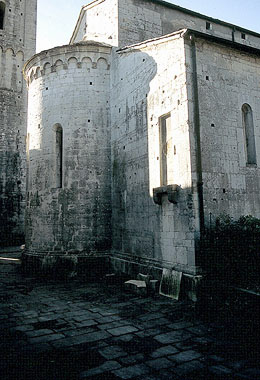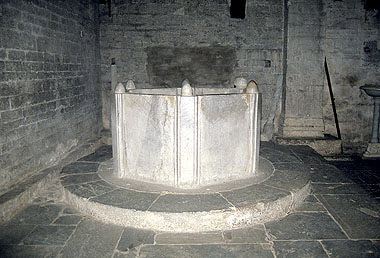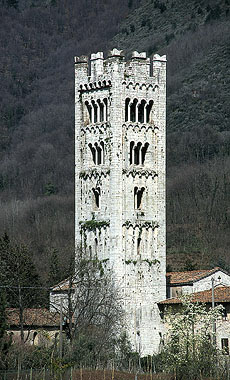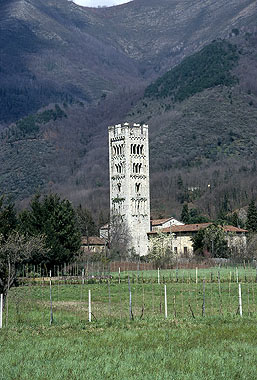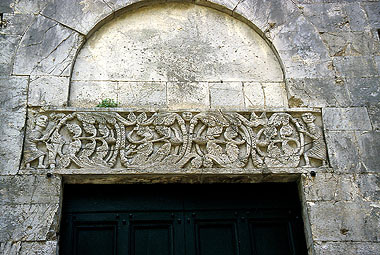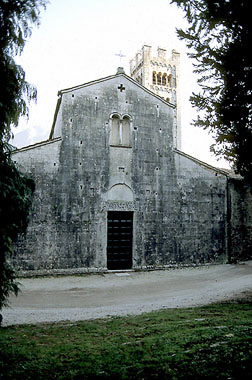
Information
Address:
Via della Chiesa 8, Borgo a Mozzano, località Diecimo (LU)
Telephone:
+39 0583 838531
Foundation:
X century
District/Location:
Borgo a Mozzano, locality Diecimo
District:
Mediavalle

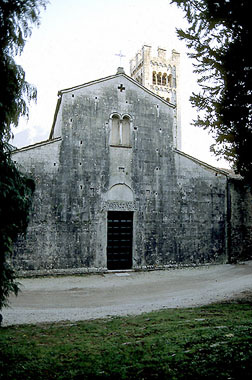
The church of S. Mary is along the road that follows the Serchio valley. The building is isolated from the Medieval village of Diecimo, to the north towards Pescaglia. The dimensions of the church are considerable and it is enriched by elaborate decorations both on the outside and the inside: particularly interesting are the figures of animals and plants in the apse and the vine-branch supported by human figures sculpted on the architrave of the main portal.
Via della Chiesa 8, Borgo a Mozzano, località Diecimo, 55023 Borgo a Mozzano LU
The church, built between the XIIth and XIIIth century, has three naves and originally possessed a semicircular apse. The isolated bell tower is also Medieval. In the XIIIth century the pieve of Santa Maria had jurisdiction on a territory that included 21 religious buildings and it depended directly from the bishop of Lucca. In the XVIIth century the church was adapted to the demands of the Counter-Reformation and the new Baroque taste: a vaulted ceiling replaced the wooden trusses and rectangular windows replaced the Medieval monofore along the nave. In this period a rectangular chapel on the south side was also built. In the XVIIIth century the church passed under the administration of the Republic of Lucca. It was restored between the XIXth and the XXth century, recovering its original Medieval form with the removal of the XVIIth century additions: the large windows were closed and the ancient monofore reopened. Inside the church you can see a XIIth century stone slab depicting a knight, a XIIIth century font, a XIVth century stoup and tabernacle as well as a XVIIth century pulpit. Nothing remains today of the Xth century church: the existing building is a reconstruction datable between the XIIth and XIIIth century.
Scopri altre attrazioni vicino a Saint Mary of the Assumption in Diecimo
See allYou may also like..
See allFind more
0








